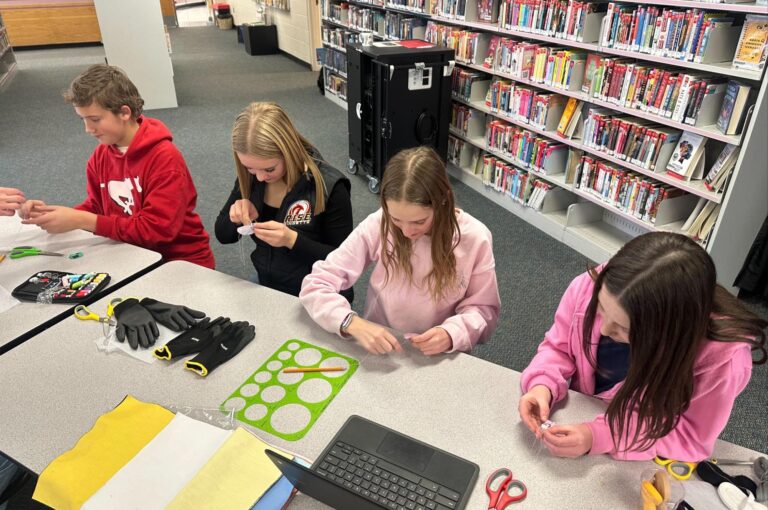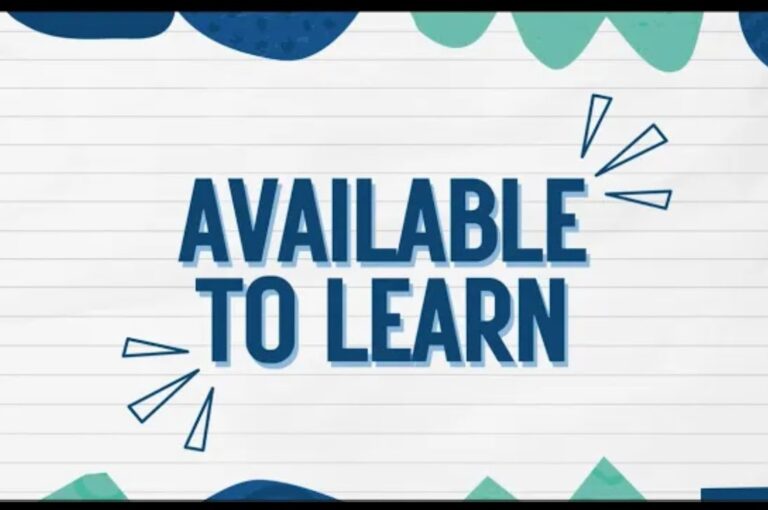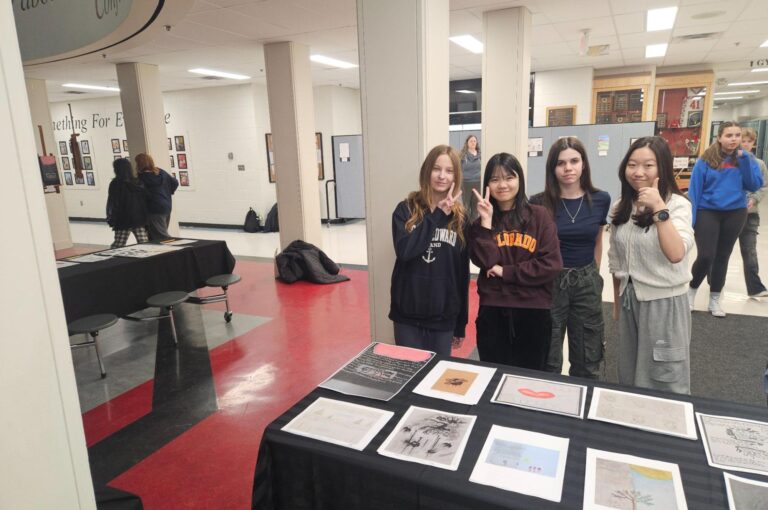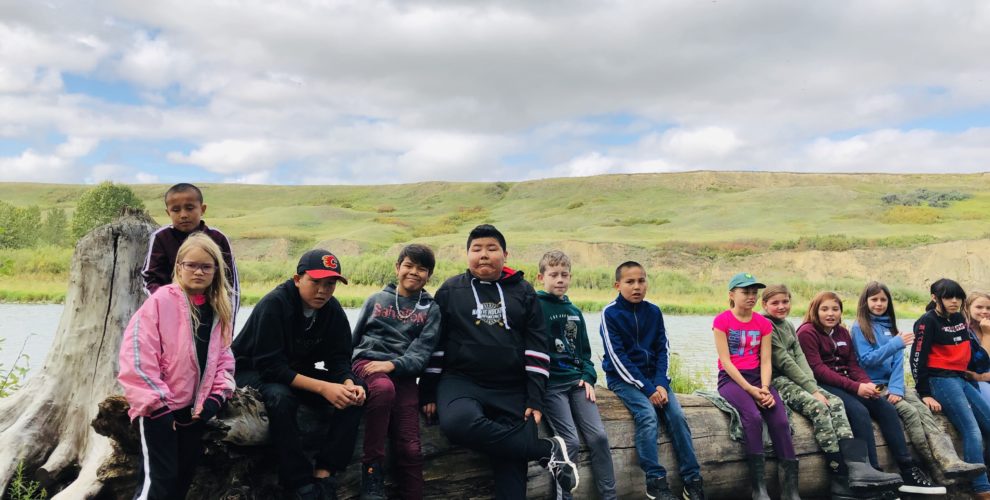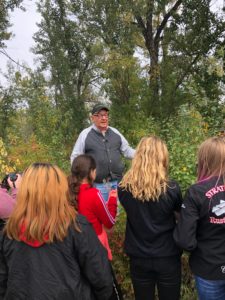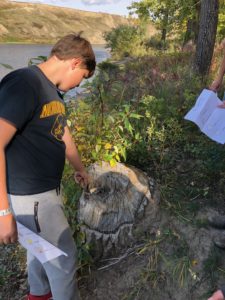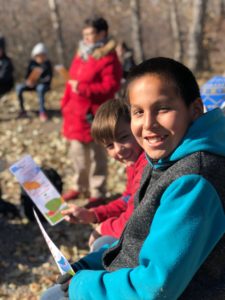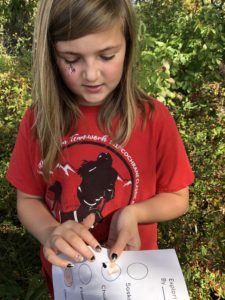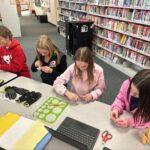There are limitless learning opportunities outside the classroom walls. One example can be found with a teacher and her students who can regularly be found out in nature along the Makhabn (Bow River in Blackfoot). Cross-curricular connections weave naturally into this type of place-based programming including touching upon key learning objectives found in the Science, Social Studies, Math, Language Arts, Health, Physical Education, and Art curriculum. The curriculum comes to life with these inclusive, hands-on experiences. Curiosity and collaboration thrive. Another amazing aspect of this “out of the box” learning environment is the facilitation of self-regulation and a natural sense of calm.
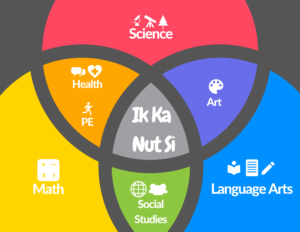 The Ik Ka Nutsi (which means to shine; to be bright in Blackfoot) Park Program took flight this school year (2019-2020). This partnership provides grade 5 and 6 students from Carseland Elementary School with the opportunity to visit Wyndham-Carseland Provincial Park on a weekly basis. The students develop a deeper connection and relationship to the land (gaining stewardship and ecological literacy skills). Students also gain a variety of health benefits from this program including:
The Ik Ka Nutsi (which means to shine; to be bright in Blackfoot) Park Program took flight this school year (2019-2020). This partnership provides grade 5 and 6 students from Carseland Elementary School with the opportunity to visit Wyndham-Carseland Provincial Park on a weekly basis. The students develop a deeper connection and relationship to the land (gaining stewardship and ecological literacy skills). Students also gain a variety of health benefits from this program including:
- active living and physical fitness
- cultivating positive social relationships (collaboration, problem-solving and play)
- increasing self-confidence and resilience
Indigenous Values, Knowledge, and Worldviews
A foundational aspect of this program has been to have an Elder from Siksika Nation share Indigenous ways of knowing and Traditional Ecological Knowledge with the students. This program respects Indigenous values, knowledge, and worldviews.
The students have also been learning Blackfoot words and stories as they relate to nature and their experience at the park. Learning in a meaningful context helps students to learn and retain these Blackfoot words and phrases and use them on a regular basis.
This is an example of place-based learning in action. The students are authentically connecting to community and the landscape that they call home. Regular visits create a relationship to this space with Elder Darryl Breaker. It is this learning opportunity that captivates the students with a sense of wonder and sparks their natural curiosity. Additionally, this place and the people here mean something very important to the students, which results in complete engagement and dendrites firing. Connecting and learning in a meaningful context further nurtures a desire to protect a place that they care about deeply and to become positive change makers.
Community Connections & Partnerships
Community connections and partnerships are key to this type of programming. Elder Darryl Breaker and First Nations Liaison Joyce Doore guide the programming and their knowledge is the heart of each lesson. Feedback from a variety of community members has also been instrumental in this place-based programming. Spike Eaglespeaker, from Siksika Nation, has also provided guidance, expertise and knowledge. As well, parent and guardian support and enthusiasm for this pilot project has been essential in making this program successful. The support from Nutrien in believing in this program and making it a reality has also been a very important partnership. In addition, Alberta Parks has been incredibly supportive and has offered a variety of resources to make this program a success.
We are truly grateful for all of the community support.
To learn more about land based learning and the Ik Ka Nutsi program, listen to this podcast and this podcast from Powering Possibilities.

